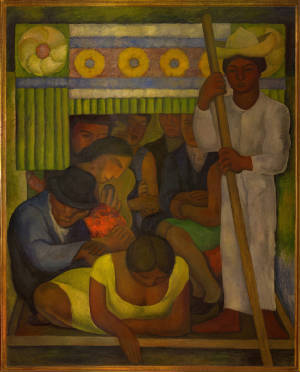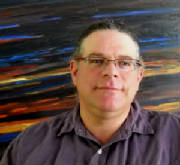|

Diego Rivera (Mexican, 1886 –
1957), La Canoa Enflorada (The Flowered Canoe), 1931, oil on canvas, Collection of Museo Dolores Olmedo, Xochimilco,
Mexico. © 2012 Banco de México Diego Rivera Frida Kahlo Museums Trust, Mexico, D. F. / Artists Rights Society (ARS), New York.
Art is spoken of in many voices. In this issue of TAS, our authors represent
three different voices: that of the curator, the poet, the critic. Each has a different relationship to and investment in
the art they speak about. The curator's and critic's respective relationships to art are mediated through exhibitions, but
they do their work at opposite ends of the exhibition process. Curating is in some sense an act of art criticism as well,
frequently, of art history. The question of what goes into an exhibition and what does not, and of how both artist and work
should ultimately be portrayed, what kind of narrative should be built around them, are interpretive and evaluative questions
not unfamiliar to the critic. If curating has some affinities with criticism, the reverse is also true. By selecting which
works (in some cases, which artists) and which aspects of an exhibition to discuss, the critic also curates. The critic, too,
weaves the works into a narrative, though it may turn out to be a counter-narrative to the one intended by the curator! Poets
enjoy a privileged position when they take inspiration from visual art: they are their own curators and can address any art
they choose, from any era. Although they, too, tell stories about the art, their stories are independent of the institutional
constraints under which both the curator and the critic do their work. One expects the poet to address art on a more personal
basis than is usually available to either curator or critic. In
an exchange with Deanna Sirlin, TAS's Editor-in-Chief, Dr. Elliott King, Guest Curator of Frida and Diego: Passion,
Politics, and Painting at the High Museum of Art in Atlanta, provides insight into the way he thinks about the subjects of
the exhibition, their legacy and contemporary significance, and the insights into their work he has gained by working on the
exhibition. Our London-based writer, Anna Leung, addresses contemporary art from China in an exhibition at the Hayward Gallery
this past fall. She discusses the work's relationship both to its particular national and cultural contexts and to larger
trends in the contemporary art world. She also addresses the well-known Chinese artist Ai Wei Wei's highly critical evaluation
of the exhibition. Our poet, Blake Leland, offers a range of poems, including a love poem and two meditations on creation
and creativity, along with a clutch of poems addressing paintings by Brueghel, Velazquez, and Cezanne. Leland addresses the
paintings as an observer, describing what he sees in them. As a poet, Leland is alive to the human implications of the scenes
depicted in the paintings. His voice joins that of curator and critic in our trialogue. All my best,
Phil
Philip Auslander Editor-in-Chief The Art Section 
Philip Auslander is the Editor of The Art Section.
|
